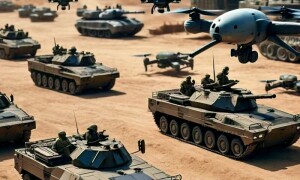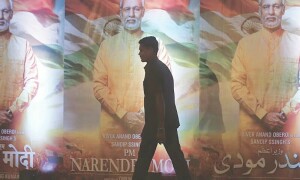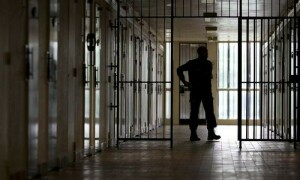On May 15, Dawn published a detailed report on CPEC’s original master plan as drawn up by the China Development Bank. The plan makes a fascinating read. It is an elaborate strategy which at least in theory can rapidly change Pakistan’s economic, political and even social landscape for the better.
Dawn’s Khurram Husain who penned the report wrote that “the plan envisages a deep and broad-based penetration of most sectors of Pakistan’s economy as well as its society by Chinese enterprises and culture.”
The plan talks about greatly expanding and building various areas of Pakistan’s industrial and agricultural sectors. It speaks of erecting an infrastructure which will not only help carry unprecedented economic expansion but will also be entirely investment-friendly for foreigners.
Could the Chinese focus on reinvigorating Pakistan’s tourism sector reverse its decline?
A portion of the report also directly addresses Chinese entrepreneurs within China by advising them to ‘make an effort seeking powerful strategic partners for bundling interest in Pakistan.’
Though the plan largely concentrates on investment and growth in the industrial and agricultural sectors, and reinstates the need to jointly curb terrorism, there is also a section in it on tourism.
The plan mentions the creation of a “coastal tourism industry” in which, to quote Khurram’s report, “a long belt of coastal enjoyment industry that includes yacht wharfs, cruise homeports, nightlife, city parks, public squares, theaters, golf courses and spas, hot spring hotels and watersports will be constructed.”
The plan features the building of international cruise clubs which will provide marine tourists private rooms “that would feel as though they were living in the ocean.” The plan also speaks of creating wildlife sanctuaries, an aquarium, botanical gardens, a coastal beach, coastal villas, car camps, SPA, beach playgrounds and seafood streets.
These are remarkable ideas. Pakistan’s status as a tourist and recreational spot has been suffering for the past two decades. In fact, at the moment it is almost non-existent.
In the 1960s, the Ayub Khan government drew up a ‘Master Plan for the Development of Tourism in Pakistan.’ It was conceived with the help of French consultants. The regime invested large sums in the development of three forms of tourism: Muslim, Archaeological and Recreational.
Sufi shrines and Mughal-era mosques were renovated, archaeological sites were refurbished, new hotels, cinemas and restaurants were built while the existing nightclubs and beach resorts were improved.
Linda Richter in her book The Politics of Tourism in Asia informs us that the Ayub regime’s plan was a success because by 1969, the number of foreign tourists arriving in Pakistan witnessed an appreciable growth.
A 1976 study by Cornell University, The Development of Tourism in Pakistan (by P. Shaikh) says that the Ayub era’s successful initiative was greatly expanded by the Z.A. Bhutto regime (1971-77).
The study mentions that the tourism ministry was further bolstered, even though Bhutto too followed the same pattern that Ayub’s plan had i.e. to build three forms of tourism: Muslim, archaeological and recreational. The subsequent plans (government and private funded) entailed renovation of historical mosques, Sufi shrines, archaeological sites, cinemas, hotels, beach resorts and nightclubs.
According to the study, the country’s tourism industry witnessed another bout of growth in the 1970s. It added that the Yahya government’s take-over of the former princely state of Swat in 1969 helped the Bhutto regime to develop it as a dedicated and lucrative tourist resort.

American author and journalist, Steve Inskeep, in his 2011 book, The Instant City wrote that the Bhutto regime’s tourism policies were a lot more ambitious. Anticipating a decline of Western and rich Arab tourists to Beirut in Lebanon (due to rising political instability there) Bhutto wanted to divert these cash-rich tourists to Pakistan.
The CPEC plan is correct to hint that economic progress depends on political stability as well as on economic and social liberalisation.
For this his government began to build brand new hotels, and by 1976 a vast casino was constructed on the shores of Karachi’s Clifton Beach around which bars and watersports facilities would be set up.
The Cornell study suggested that the idea was to turn tourism into a robust industry in the country and also make it create millions of jobs for Pakistanis.
Tufail Shaikh, a businessman who had invested 55 million rupees in the casino and already owned a nightclub in Karachi’s Saddar area, told Inskeep that Bhutto also wanted to attract rich Arab tourists who were visiting Bombay. He wanted to directly challenge India’s tourism industry.
Bhutto fell in a reactionary coup in 1977 and Pakistan’s ambitions to become a leading tourist spot in Asia began to slowly fall apart — though it must be pointed out that Bhutto himself had stalled the process by his actions in April 1977.
Richter in her book outlines a number of reasons for this, apart from the fact that the country’s new regime (Zia) began strengthening reactionary forces and implementing various self-claimed puritanical policies.
Richter wrote that the 1979 Islamic Revolution in Iran, the Iran-Iraq war, and the civil war in Afghanistan, also contributed to the decline of tourism in Pakistan because more than 30 percent of Western tourists to Pakistan in the 1970s had come in through Iran and Afghanistan.
Lack of interest in developing tourism (as an industry), constant political instability and the continuing strengthening of reactionary forces saw the industry fall by the wayside.
After 9/11 and the rise of extremist violence (suicide attacks, mob lynchings, etc.) in Pakistan, the tourism industry was almost completely eroded and all that was left was an empty, meaningless ministry.
The overall political and social situation in Pakistan has slightly improved after 2014. But to make the CPEC masterplan work, the state and government of Pakistan will have to initiate some drastic shifts in the prevailing cultural milieu. The milieu’s social ethos has continued to become increasingly myopic and stifling.
The CPEC plan is correct to hint that economic progress depends on political stability as well as on economic and social liberalisation – unless you are an oil-rich Arab monarchy, which Pakistan isn’t.
Pakistan is an ancient land which shares a rich history of the subcontinent, a powerful military, a tradition of democracy and an enterprising populace which is inherently moderate in its outlook.
All this needs to be nurtured if we are to become an economic powerhouse (through CPEC), instead of continuing to allow certain political and social forces to harden our moderate dispositions to meet entirely reactionary and destructive goals.
Published in Dawn, EOS, May 21st, 2017











































